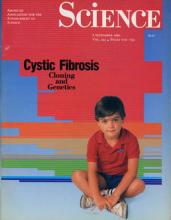Biomedical research progress can be slow, but also relentless.
A report in the Nov. 3 issue of The New England Journal of Medicine has phase III study results showing that treatment with the novel drug ivacaftor produced strikingly good lung function improvement during 48 weeks of therapy in adolescent or adult cystic fibrosis (CF) patients who have at least one of their two mutated cystic fibrosis alleles affected by the G551D mutation.
In a placebo-controlled, randomized study with 161 patients, treatment with ivacaftor when added on top of standard therapy produced an average 10 percentage point rise in FEV1 (forced expiratory volume in 1 second, the study’s primary end point measure) compared with baseline, and an average 11 percentage point rise compared with the placebo group, a statistically significant difference, after the first 24 weeks of treatment (the primary end point) and sustained through 48 weeks of treatment.
This level of lung function improvement is clinically very meaningful for patients, said Dr. Bonnie W. Ramsey, a researcher at Seattle Children’s Hospital and the University of Washington who led the multicenter team that ran the study.
The ivacaftor-treated patients also showed significant benefits in several other secondary efficacy measures. The rate of freedom from pulmonary exacerbations through the 48 weeks of treatment rose from 41% of the placebo group to 67% in those on ivacaftor, while the total number of exacerbations was 55% lower for patients on ivacaftor compared with the placebo group during the 48 weeks. Exacerbations included events such as a need for intravenous antibiotics, hospitalizations, and other important changes in clinical status and treatment, and this effect shows ivacaftor's ability to improve patients’ health and quality of life, Dr. Ramsey told me.
Ivacaftor treatment was well tolerated, with a similar rate of adverse events as in the placebo group, and a reduced number of adverse events leading to study drug discontinuation compared with placebo. The drug is administered as an oral pill given twice daily.
The study population was primarily adult, with about 75% of enrolled patients aged 18 years or older; the average age of the entire study group was about 25 years old, and the youngest patients enrolled in the study were 12 years old.
Last March, Vertex, the company developing ivacaftor, announced preliminary results from a companion, placebo-controlled, phase III study of the drug in 52 children with CF aged 6-11 years old. At 24 weeks, ivacaftor led to significant improvement in lung function compared with placebo. Last June, Vertex announced that the 48-week results remained consistent and produced no safety concerns. Vertex has said that researchers will present the full 48 week pediatric results at a meeting later this week in California. The company also said in a statement that it is currently making the drug available to U.S. CF patients aged 6 or older in an expanded access program.
For the time being, appropriate CF patients to receive ivacaftor remain those who have the G551D mutation in at least one of their two mutated copies of the CF gene, which makes the cystic fibrosis transmembrane conductance regulator (CFTR) protein.
The CFTR protein functions as an epithelial ion channel that regulates absorption and secretion of salt and water. Ivacaftor increases the time that activated CFTR channels remain open, and thereby augments function of the CFTR protein that has the G551D impairment. Only about 5% of CF patients carry at least one G551D mutation. The most common CF-causing mutation of the CFTR gene by far is the DF508, which occurs on at least one CFTR allele in more than 90% of U.S. patients with CF.
Despite ivacaftor’s currently limited clinical applicability, and remaining questions about its long-term safety and safety in infants and young children, Dr. Pamela B. Davis still called ivacaftor a “triumph,” in her editorial that accompanied the Nov. 3 NEJM report. She also noted the drug’s development was “the destination of a long journey” that began 22 years ago, in September 1989, when scientists first reported discovery of the CF gene, the gene encoding the CFTR protein.
It’s easy to recall the excitement and newspaper headlines that surrounded the report of that discovery more than 2 decades ago, first in August 1989 when word initially came out that the CF gene had been found and cloned, and then a couple of weeks later, in early September, when the full data on the gene’s location and the sequence of the DF508 mutation appeared in three articles in the journal Science, written by a team of researchers led by geneticist Lap-Chee Tsui, then at the Hospital for Sick Children in Toronto and now at the University of Hong Kong, and Francis S. Collins, then at the University of Michigan and now director of the National Institutes of Health.


